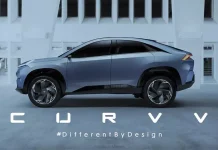Indian motorcycle market
The Indian Motorcycle Market, a pivotal player in the global two-wheeler industry, has undergone significant transitions and challenges in recent years. As environmental concerns rise and technology advances, the market landscape is continually evolving. 2023 has been a year of revelations, with electric vehicles making a statement and traditional manufacturers adapting to the changing winds. This analysis delves into the performance, challenges, and potential trajectories of the Indian Motorcycle Market in 2023, based on the provided data.
Key Points
- The market is expected to grow by a double-digit percentage in 2023, driven by the electric segment.
- Hero Motocorp is still the leading manufacturer, but Honda is losing market share to new electric vehicle specialists.
- TVS Motor is the fastest-growing manufacturer, thanks to the success of its iQube electric scooter.
- Bajaj Auto is recovering after a bad 2022.
- Royal Enfield continues to grow rapidly.

2023 trends and data
The Indian Motorcycle Market has displayed significant dynamism in 2023, following a strong recovery in 2022. Here’s a comprehensive breakdown of the key points and insights derived from the data:
- Overall Performance: While the market seemed poised for nearly double-digit growth in 2023, external factors like high fuel costs, increased interest rates, and inflation have hampered its progress. YTD September 2023 sales stood at 12.75 million, marking a growth of 4.2%, primarily driven by the electric segment.
- Electric Segment Rise: The success of new OEMs specializing in electric scooters has been a notable factor this year. Their advent has disrupted the dominance of the traditional top five manufacturers, compelling them to pivot towards EVs. The Electric L1 and L3 segments have shown robust growths of 20.2% and 48.2%, respectively. This underscores the growing preference for electric two-wheelers, a trend that could reshape the industry’s future.
- Top Manufacturers’ Performance:
- Hero: Continues its leadership with YTD sales at 3.9 million (+2.4%).
- Honda: Experienced a slump with 2.88 million sales, a decline of 13%, possibly due to the burgeoning competition from EV specialists.
- TVS Motor: Emerged as a significant gainer with 2.19 million sales (+20.1%). The electric scooter iQube has played a pivotal role, registering a 475% growth, along with Raider 125’s impressive 201% growth.
- Bajaj Auto: After a tough 2022, they’ve shown resilience with 1.5 million sales (+20.9%).
- Royal Enfield: Sustained its growth trajectory with 608,909 sales, a rise of 21.5%.
- 2022 Recap: The previous year witnessed sales of 16.2 million units, a growth of 13.2%. Hero, Honda, and TVS Motor remained the top three, with electric scooter specialists like Okinawa and Ola making their presence felt.
- Challenges and Future Prospects:
- The motorcycle industry, post the COVID-19 disruptions, embarked on a path of recovery in 2022. However, global inflation and supply chain issues pose challenges, particularly since India’s domestic production meets nearly all its demands.
- Electrification momentum is strong, driven by government incentives. While 2022 saw electric segment sales of 630,000 units (a growth of 511.5%), 2023 anticipates a jump to around 1 million units.
Conclusion
In 2023, the Indian Motorcycle Market showcased the dynamic interplay of innovation, market forces, and external challenges. While traditional giants like Hero and Honda maintain their foothold, the surge of electric vehicle specialists indicates a potential paradigm shift in the near future.
Economic challenges such as inflation and supply chain disruptions loom large, yet the industry’s resilience and adaptability offer hope. As electrification gains momentum and consumer preferences shift, the market is poised for transformative growth, demanding astute strategies and foresight from its key players.
The Indian motorcycle market in 2023 indicates a strong inclination towards electric two-wheelers. While traditional manufacturers remain dominant, the swift growth of electric-focused OEMs suggests an impending shift in market dynamics. External economic factors remain a challenge, but the market’s adaptability and innovation could drive future growth.





































